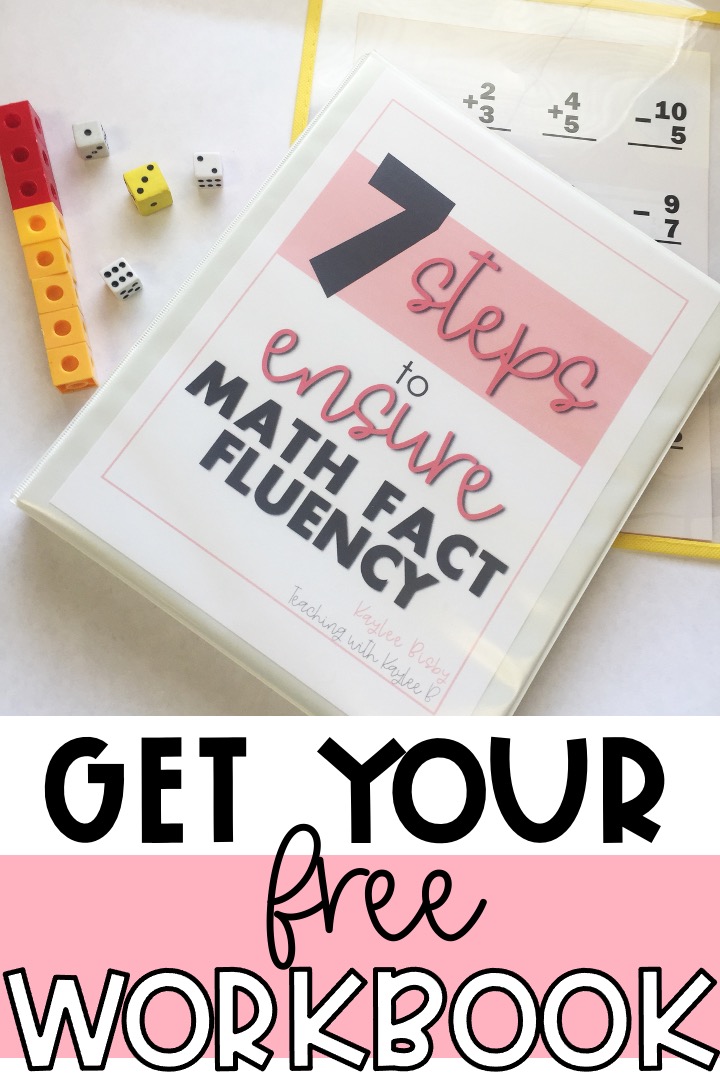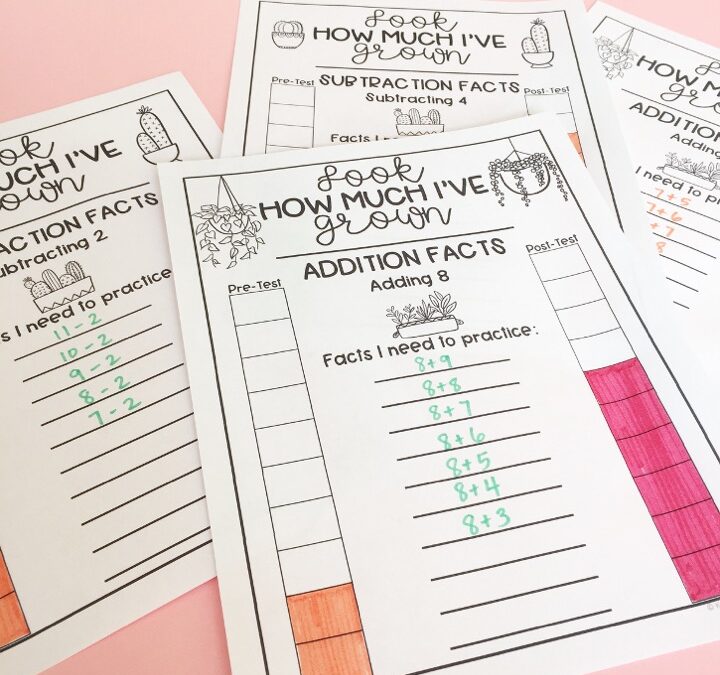One of my favorite parts about being a teacher is that I get to see student progress. At the beginning of the school year, many students don’t know many math facts. They don’t have the tools to figure the math out either. But by the end of the school year, those struggling students are zooming through math facts like they are nothing! Something that I have found to really help build students’ confidence in math is doing progress monitoring for math.
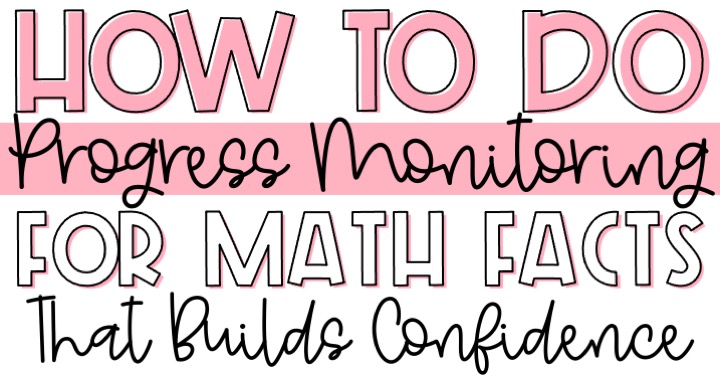
Progress monitoring in math helps us as teachers see where students are getting caught up. It helps us know what practice activities, reteach lessons, or interventions children may need.
I use progress monitoring for math in a way that students get involved. They literally color in their progress! They get to see their growth, and as a result, they build their confidence in their mathematical abilities. And to me, that means everything!
So let’s get starting on the best practices for progress monitoring in math. But before we get started, did you know I have a free workbook for 1st and 2nd grade teachers? In this workbook I share 7 steps you can do to help your students memorize addition and subtraction math facts. Download your free workbook here: The 7 Steps to Ensure Math Fact Fluency
Progress Monitoring for Math
Like I said before, I love to get my students involved with progress monitoring. I also need something that doesn’t take me a bunch of prep time. So I make a Progress Monitoring Math Booklet for each of my students. It’s easy prep because I only have to print them out once. Then I have students keep them in their desks.
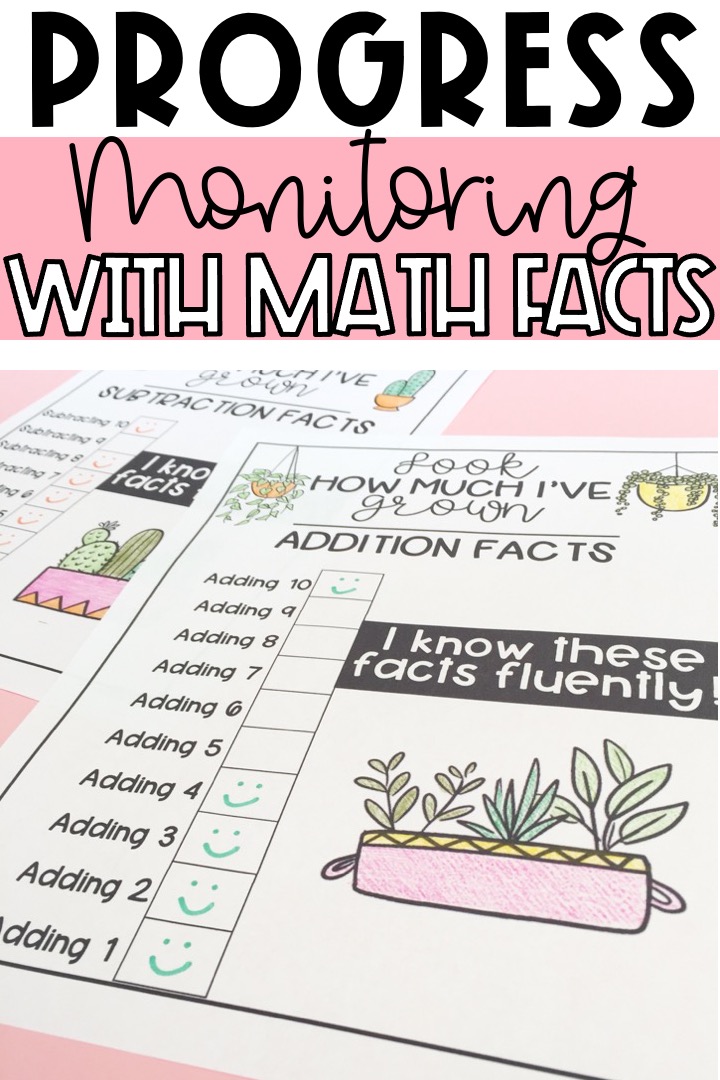
Then when students pass off a fact, they reach in their desk, pull out their packet and can mark which ones they passed off. I also include sheets where students write down the facts in which they missed on the test so that they can know which ones they need more practice on.
I have lots of math fact games and activities split on different types of math facts. For example, I have math fact war games that focus on facts where they add 4, 5, and 6. So if students see they need to practice those ones, they can play that game maybe as a center activity for a fast finisher activity. Find my Addition Math Facts War game here and my Subtraction Math Facts War game here.
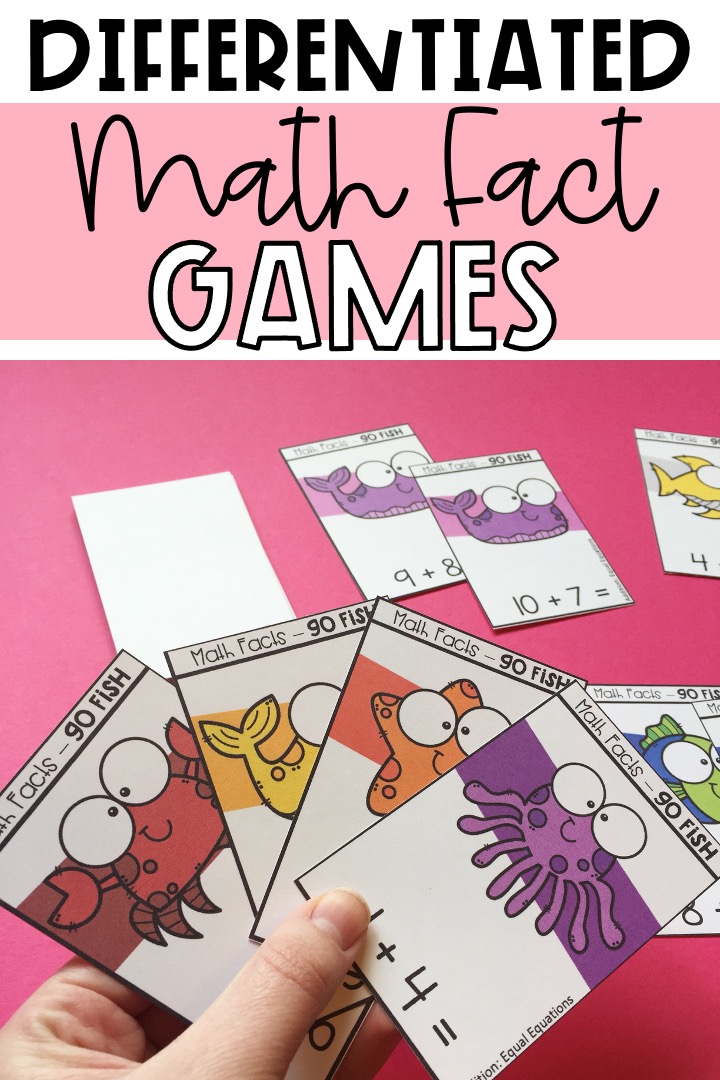
I also have games like Math Facts Go Fish and Math Facts Old Maid where I have different versions of addition and subtraction facts 1-10 and facts 1-20. So I can differentiate student needs in those ways as well. Find my Math Facts Go Fish game here and my Math Facts Old Maid game here.
Now we talked about students marking off facts they know in their Progress Monitoring Math Booklet, but how do they know they passed it off? That is where progress monitoring math assessments come into play.
Progress Monitoring Math Assessments
With progress monitoring in math, we need to see where students are at. We need progress monitoring math assessments. For math facts, I do this with timed tests.
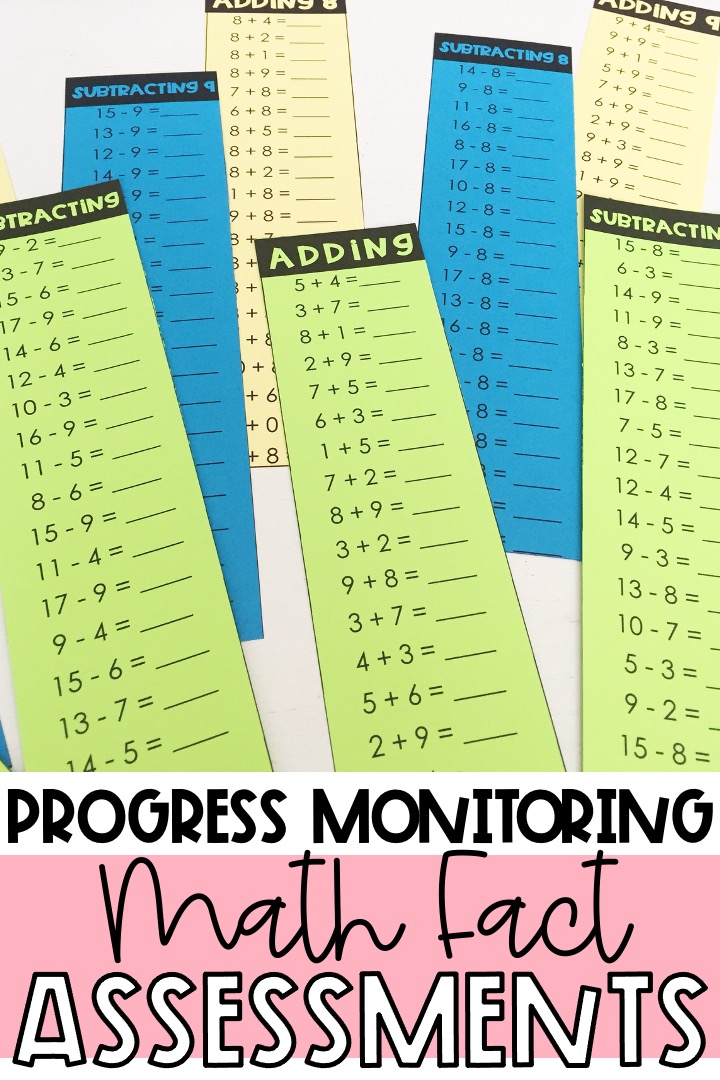
Normally I do not do timed tests as practice in my classroom. And when we are using timed tests for a progress monitoring math assessment, they are not practice. They are an assessment where we can take the data and teach to student needs. To learn more about timed tests, read this blog post here: Stop Using Timed Tests To Practice Math Fact Fluency
I have assessments where there are facts just adding one number. I even laminated these so students can use draw erase markers and I don’t have to keep making a bunch of copies. Students get with a partner. One partner takes the test. The other will watch the sand timer and tells the student when to stop. Then they correct the test with the answer key and record it in their Math Progress Monitor Booklet.
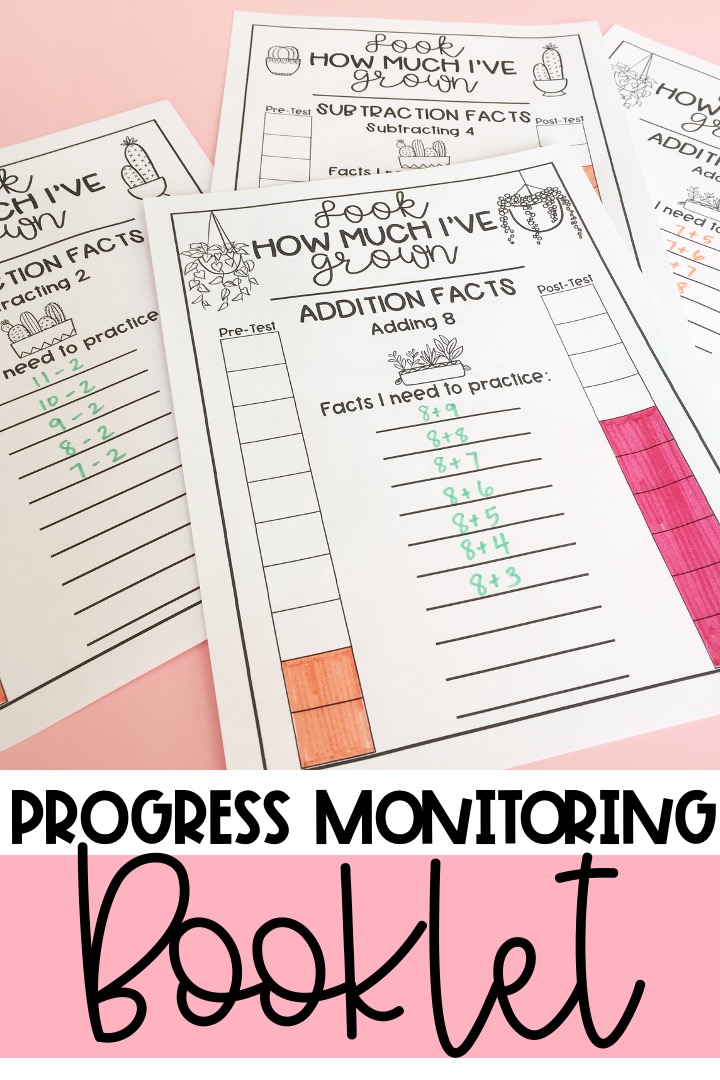
This is a routine that I teach students at the beginning of the year. I model it to students, we share what it looks like and sounds like, and I have students practice. That way students can do this independently.
The best part about this is I’m not having to correct any timed tests! Students see their growth and build their confidence. And students work on the level that they need. For the timed tests I used in my classroom click here.
When it comes to progress monitoring for math, it doesn’t have to be a lot of prep work. It doesn’t have to be you correcting hundreds of timed tests throughout the school year. It comes down to having the right progress monitoring math tools and teaching your students routines so they can be independent. To save on all the resources I’ve shared in this blog post, check out this bundle here. Check out my differentiated math fact games here.
Progress monitoring has a lot to do with students developing a growth mindset, read How to Have a Growth Mindset in the Elementary Math Classroom.
For even more options for progress monitoring for math, download my free workbook: The 7 Steps to Ensure Math Fact Fluency
